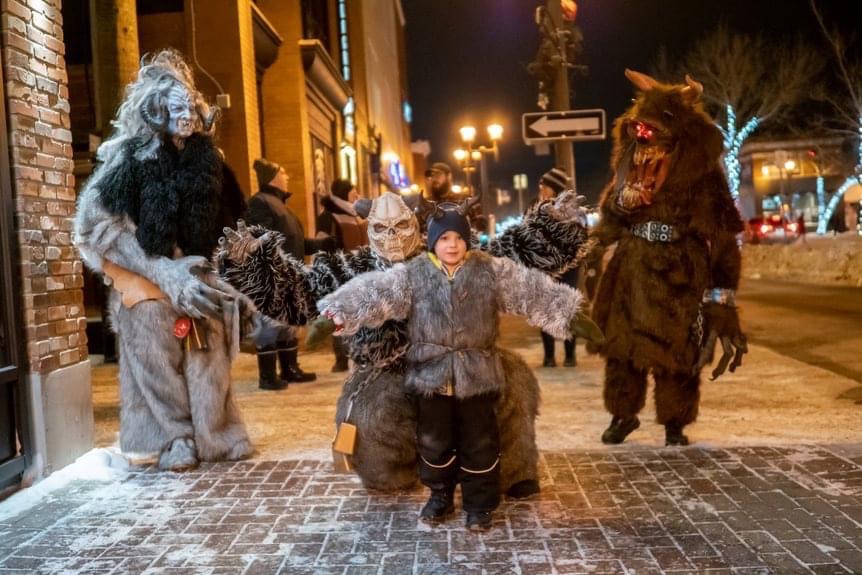We all know the story of St. Nicholas: He made a list, divided it in two and rewarded those children on the “nice” half with presents. But what about the other half? Is missing out on toys and candy really enough punishment for impish youths? Don’t they deserve a personified representative of punishment?
The Germans say “Ja.”
Krampus is the “devilish companion” of jolly old St. Nick, and his name derives from the German word “claw.” Like many ancient traditions, the character’s thought to have come from ancient pagan rituals that revolved around the winter solstice, but the Germans gobbled him up (figuratively, like Krampus originally did with children).
“They have a dark sense of humour, for sure. And I think a big part of the original attempt was to keep children well behaved and make sure they didn’t wander off in the dead of winter,” says Ross Harty, the resident bard and storyteller for Krampusnacht (“Krampus night”) Edmonton, happening Dec. 7 on Whyte Avenue.
It’s a costumed march that starts at Dr. Wilbert McIntyre Park, where people will meet dressed up like furry, horned ghouls. After some folklore storytelling, they’ll divide into two groups before clip-clopping their ways in opposite directions up and down the avenue. When the two groups inevitably cross paths, they’ll have a “remple,” a mock fight, depending where they meet. “If we’re in the middle of a street crossing, it’ll be quick. But in Austria, quite often it’s very territorial.”
It’s also very tongue-in-cheek. Despite the scary imagery, it’s basically a Halloween version of Christmas. Many Krampusnacht crew members pull double duty from Deadmonton, and Harty suggests contacting them, and Theatre Garage, for costume options.
There’s a “Pied Piper effect,” Harty says, and quite often kids are more intrigued than parents. “They will feed off our energy, so when they see a lot of excitement they know they’re supposed to be excited, and a lot of us do work in a professional haunted house, so we know what is a tasteful scare and what’s not.” But he adds that dogs don’t always get it, so you should probably leave Fido at home.
